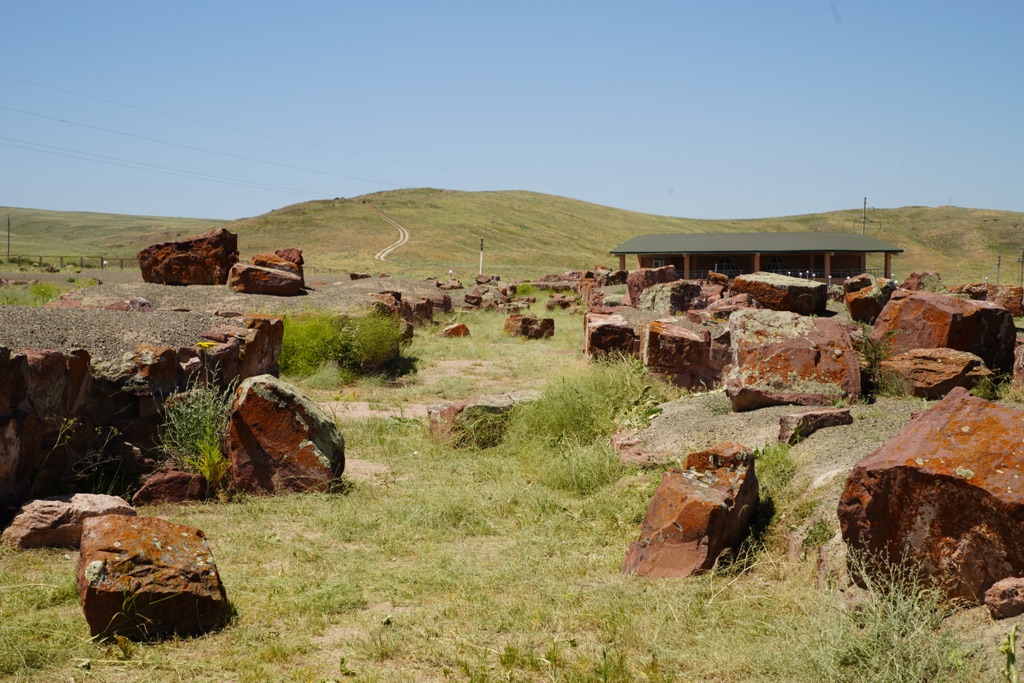Akyrtas is a mysterious and ancient archaeological site located in Kazakhstan. It features the ruins of a massive stone structure, which has puzzled historians and archaeologists for years. The origins and purpose of Akyrtas remain a subject of debate, with various theories suggesting it was a palace, monastery, or an astronomical observatory. Despite its enigmatic nature, Akyrtas offers a unique glimpse into the past civilizations of Central Asia.
Get your dose of History via Email
Historical Background of Akyrtas
The discovery of Akyrtas dates back to the 19th century when Russian military officer and geographer Alexey Pavlovich Fedchenko stumbled upon the ruins. The site’s construction is attributed to the period of the Western Turkic Khaganate, around the 7th century AD. However, some scholars suggest that it could have been built later, during the 8th or 9th centuries. The area was later inhabited by various nomadic tribes, which added to the complexity of its history.
Architecturally, Akyrtas stands out due to its grand scale and the use of massive stone blocks. The builders of Akyrtas remain unknown, but the sophistication of the construction techniques indicates a highly organized and skilled society. The site does not bear any definitive inscriptions that could shed light on its creators, leaving their identity shrouded in mystery.
Throughout history, Akyrtas has not been the scene of any known significant historical events. Instead, it has remained a quiet testament to the ingenuity of its builders. Its remote location has likely contributed to its preservation, keeping it away from the ravages of war and urban development.
Despite its obscurity in historical texts, Akyrtas has attracted the attention of various researchers. Archaeological excavations have been conducted, but the site has not yet revealed all its secrets. The lack of written records from the time of its construction makes it difficult to ascertain its exact role in the past.
Today, Akyrtas is recognized as an important cultural and historical site. It offers valuable insights into the architectural practices and societal structures of the civilizations that once flourished in Central Asia. Its significance is acknowledged by scholars and tourists alike, who visit the site to marvel at its ancient grandeur.
About Akyrtas
Akyrtas is renowned for its impressive stone masonry. The site consists of the remains of a large rectangular building and several outlying structures. The main building’s walls were constructed from blocks of pinkish-brown limestone, some weighing several tons. The precision with which these blocks were cut and placed suggests a high level of craftsmanship.
The architectural layout of Akyrtas includes a central courtyard surrounded by rooms and halls. The design indicates a complex and well-planned structure, with evidence of columns and arches pointing to an influence of both local and foreign architectural styles. The fusion of these styles speaks to the cultural interactions that occurred along the Silk Road.
One of the most striking features of Akyrtas is the absence of any binding material, such as mortar, between the stone blocks. This dry masonry technique has contributed to the durability of the structure, allowing it to withstand the test of time. The choice of materials and construction methods reflects a deep understanding of the local environment and available resources.
Despite the ruinous state of Akyrtas, the site’s layout can still be discerned, providing clues to its original grandeur. The building’s dimensions and the scale of the stones used are indicative of the significant effort and resources that were invested in its construction.
Archaeological excavations have uncovered various artifacts at Akyrtas, including pottery shards, metal objects, and tools. These findings help to paint a picture of daily life at the site and the technological capabilities of its inhabitants.
Theories and Interpretations
Several theories have been proposed regarding the purpose of Akyrtas. Some historians believe it was a palace or a complex of palatial buildings, possibly serving as a residence for a high-ranking official or noble. The elaborate design and scale of the construction support this theory.
Another theory suggests that Akyrtas may have been a religious site, such as a monastery. The presence of a central courtyard and surrounding chambers is typical of monastic complexes found in other parts of the world. However, there is no definitive evidence to confirm this hypothesis.
Some researchers have speculated that Akyrtas could have been an astronomical observatory. The alignment of the structures and the site’s location may indicate an interest in celestial events. However, this theory remains speculative without concrete archaeological evidence.
Interpretations of Akyrtas have also been informed by comparisons with other historical sites. The architectural features bear similarities to both Sogdian and Persian building traditions, suggesting a blend of influences that were prevalent along the Silk Road during the early medieval period.
Dating of Akyrtas has been challenging due to the lack of organic materials that can be analyzed using radiocarbon dating. However, stylistic analysis of the architecture and artifacts has provided a rough estimate of its age. Further research and technological advancements may yield more accurate dating in the future.
At a glance
Country: Kazakhstan
Civilization: Western Turkic Khaganate
Age: 7th century AD (with some scholars suggesting 8th or 9th century)

